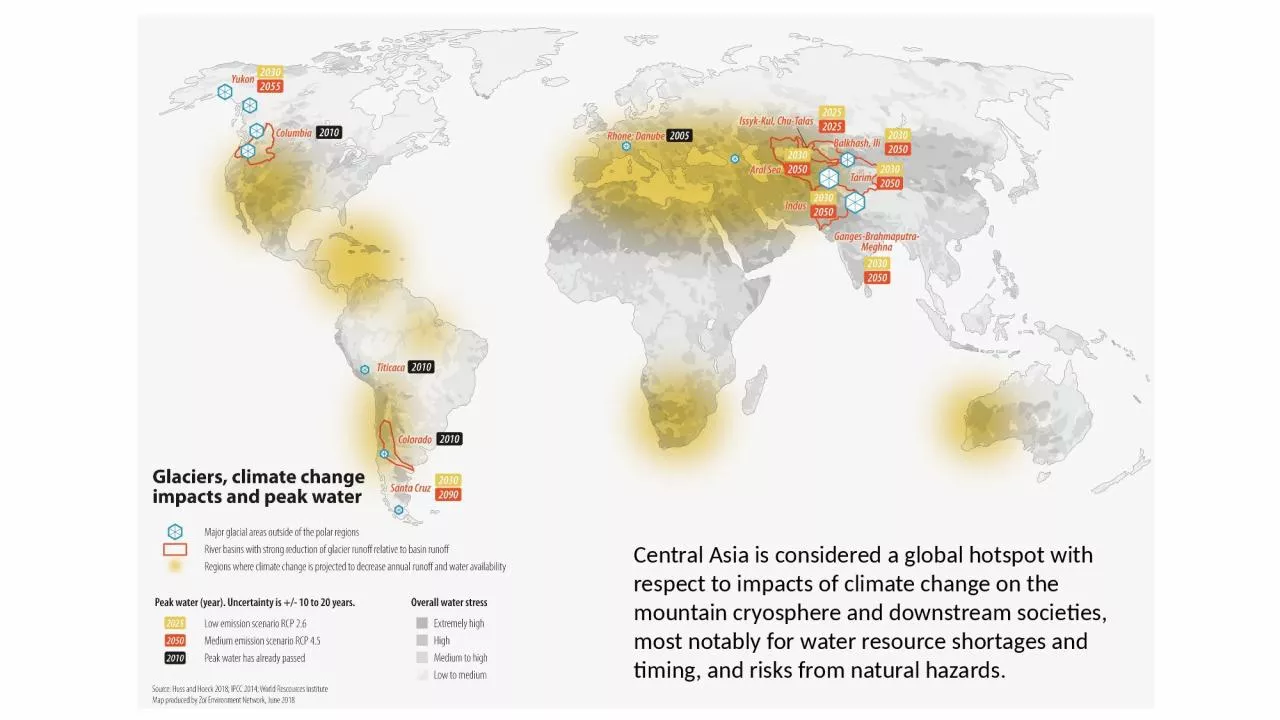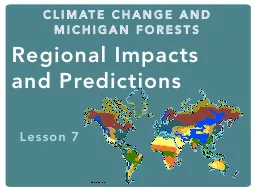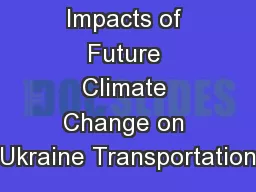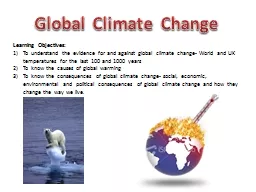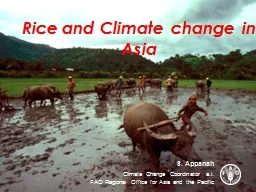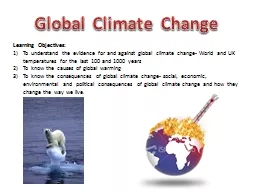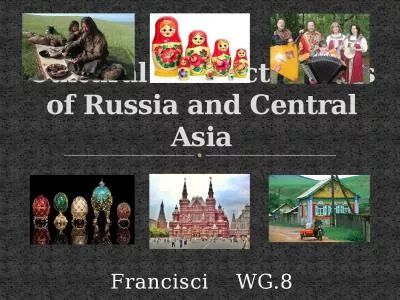PPT-Central Asia is considered a global hotspot with respect to impacts of climate change
Author : hazel | Published Date : 2023-10-04
The three components of the cryosphere glaciers snow and permafrost are all affected by climate change Glaciers of Central Asia are essentially natural reservoirs
Presentation Embed Code
Download Presentation
Download Presentation The PPT/PDF document "Central Asia is considered a global hots..." is the property of its rightful owner. Permission is granted to download and print the materials on this website for personal, non-commercial use only, and to display it on your personal computer provided you do not modify the materials and that you retain all copyright notices contained in the materials. By downloading content from our website, you accept the terms of this agreement.
Central Asia is considered a global hotspot with respect to impacts of climate change: Transcript
Download Rules Of Document
"Central Asia is considered a global hotspot with respect to impacts of climate change"The content belongs to its owner. You may download and print it for personal use, without modification, and keep all copyright notices. By downloading, you agree to these terms.
Related Documents

